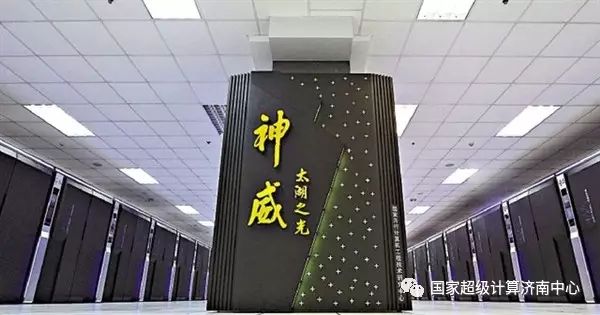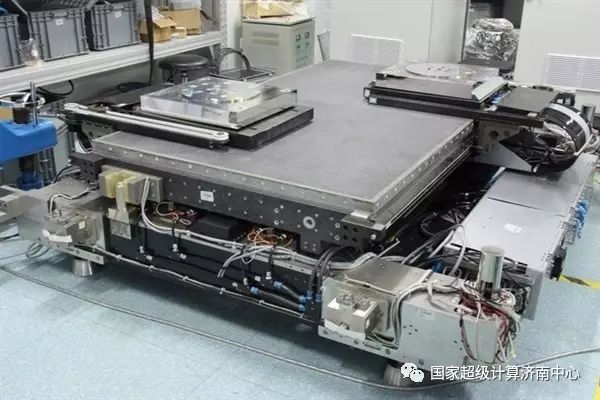China boasts the world’s leading supercomputer, the Sunway TaihuLight, which is excitingly powered by domestically produced CPUs. However, the general public has very few opportunities to use computers equipped with domestic CPUs and operating systems. Recently, Zhaoxin claimed that its self-developed CPUs can now compete with international manufacturers in terms of performance. It seems that the previously underperforming domestic CPUs have suddenly reached international standards, and with the announcement of the domestically secure operating system, Kylin, is the rise of domestic CPUs and operating systems truly on the horizon?
The author believes that the rise of domestic CPUs and operating systems should be marked by their widespread adoption in civilian sectors. From this perspective, domestic CPUs and operating systems still have a long way to go before achieving this. However, it is encouraging that both are advancing rapidly toward civilian use, and importantly, they have achieved a level of self-reliance, represented by Loongson + Linux.

Why is it not Zhaoxin, which was mentioned earlier as having performance on par with Intel/AMD? To understand this question, we need to analyze domestic CPUs.
Design and Manufacturing of Domestic CPUs
Currently, domestic CPUs can be roughly categorized into four types: self-designed, open-source solutions, purchased solutions, and licensed solutions.
The first type is self-designed, with Loongson being a representative. The microarchitecture of Loongson is independently developed by the Chinese Academy of Sciences, but it is often interpreted as not being completely self-designed due to its compatibility with the MIPS instruction set. In 2011, Loongson acquired the licensing for the MIPS 64-bit architecture.
However, MIPS is gradually declining, so the market prospects for Loongson are not optimistic. Some friends may have had the chance to use laptops equipped with Loongson CPUs, but their performance is quite poor.
Nevertheless, the practical significance of Loongson is substantial. As a strategic technology reserve for the country, Loongson is expected to endure. Hu Weiwu, the chief scientist of Loongson CPU at the Chinese Academy of Sciences, stated in an interview that Loongson CPUs could potentially be the best in the world, but the issue lies in the lack of users and buyers. The lack of a software ecosystem is a major constraint on the development of Loongson.
Current State of Domestic CPU Design and Manufacturing
The second type is open-source solutions, with SPARC architecture CPUs as a representative. These CPUs are typically not used in civilian sectors but are mostly utilized in aerospace, such as the well-known Shenzhou spacecraft and some European spacecraft.
The third type is purchased solutions, with the alpha architecture CPU as a representative. The Sunway TaihuLight uses this type, which is also not suitable for civilian use. Although the Sunway TaihuLight is the strongest in the supercomputing field, it still has some design flaws, such as weak memory design and strong floating-point performance, making it suitable for parallel computing, somewhat similar to a graphics card. Its single-core performance is relatively weak, possibly even inferior to Loongson.

The fourth type is licensed solutions, which are currently the most widespread. For example, Zhaoxin is licensed for x86, and the well-known Huawei Kirin processor is licensed for ARM. In addition to these two, there are also Feiteng (ARM), Spreadtrum (ARM), and others. This type finds it relatively easy to commercialize, as it does not have to worry about compatibility issues and the costs are generally lower than other types.
However, this type is still constrained; although it is self-designed SoC, it differs somewhat from Loongson’s self-design. In the long run, these licenses are still someone else’s property, and information security is dependent on others, which restricts industrial development. While it can be used commercially, it is somewhat forced to label it as domestically produced.
In addition to CPU design, CPU manufacturing is also a significant hurdle. Currently, domestic chip manufacturing processes are relatively backward; for instance, photolithography machines (simply put, determining how many nanometers the chip can achieve) cannot reach world-class levels, which prevents the production of high-end chips domestically. Previously, Loongson chips were produced by outsourcing. Acquisitions are the best shortcut, but they involve political, economic, and various other issues, with some countries restricting China from acquiring companies like Micron.
Overall, domestic CPUs have indeed made significant progress, but their core competitiveness remains weak, especially in the civilian sector, which almost entirely relies on foreign technology licenses. The manufacturing process is also constrained by technological levels, making it impossible to mass-produce high-end chips.
What Lies Ahead for Domestic Operating Systems
Frankly speaking, the development of a truly domestic operating system is currently lagging behind that of domestic CPUs. Domestic operating systems can be roughly categorized into three types: completely self-developed, open-source systems, and modified closed-source systems.
The first type consists of many completely self-developed operating systems, but if we look at the application ecosystem, the number of completely self-developed operating systems is zero. This is because writing an operating system is not particularly difficult; anyone with a computer science background can write a simple operating system, but such an operating system is meaningless.

The main reason is that it lacks a complete software ecosystem. The reason everyone is accustomed to using Windows is that the software and services we frequently use are available on Windows, such as online banking for shopping, which cannot be used on other systems. The development of a system is a long process, involving not just the improvement of the system itself but also the improvement of the system’s ecosystem.
The second type of open-source systems is quite numerous, with familiar Linux distributions on PCs, such as Kylin, Red Flag, Ubuntu, and Deepin; on mobile devices, there are many people using Android, including the three major domestic mobile systems MIUI, Flyme OS, and Smartisan OS. The essence of these operating systems is all based on Linux or Linux-like systems, just with different skins and some deep customizations. Thus, they can run the same programs.
The third type is modified closed-source systems, which are relatively rare. They involve purchasing complete licenses and then modifying the source code. A representative type is VxWorks, which is commonly found in embedded systems, such as those used in switches, but is almost unseen in civilian products.

From the three types above, it can be seen that Linux, as an open-source system, is a relatively good choice. Some may worry about the security of open-source systems, but this concern is somewhat unnecessary. Since the system is already open-source, even if it is insecure, it can be directly inspected. For this reason, Linux systems have never needed antivirus software; it can be said that Linux knows no borders; it belongs to the world.
Since China started relatively late in the development of domestic CPUs and operating systems, its level of development has not yet reached world-class standards. Moreover, establishing a complete ecosystem (hardware + software) is not something that can be accomplished overnight. Therefore, from the current situation, the combination of Loongson + Linux is a relatively good choice for civilian use. Of course, it is also important to distinguish the primary and secondary relationship between domestic CPUs and operating systems; the technological barrier lies in the chips, so the importance of domestic CPUs is greater than that of domestic operating systems.


